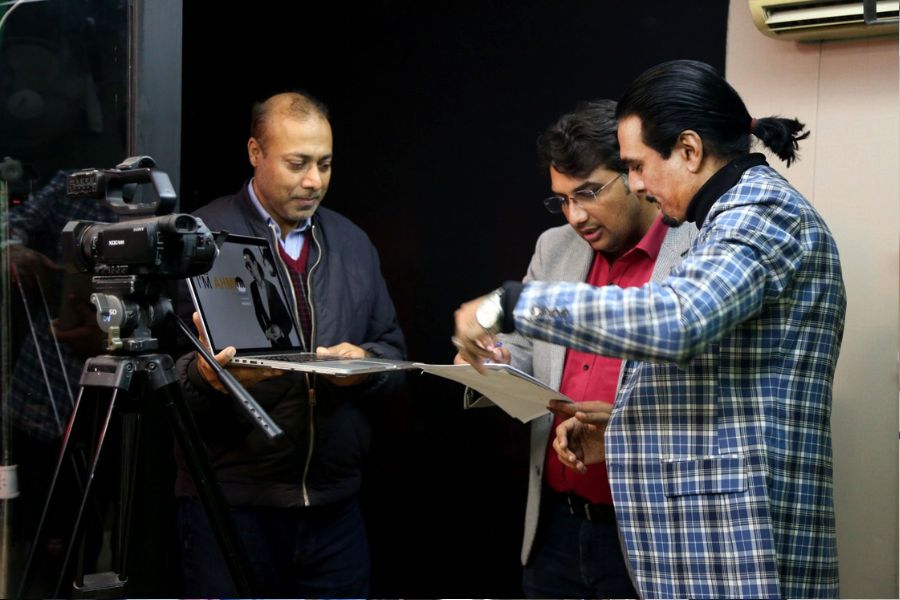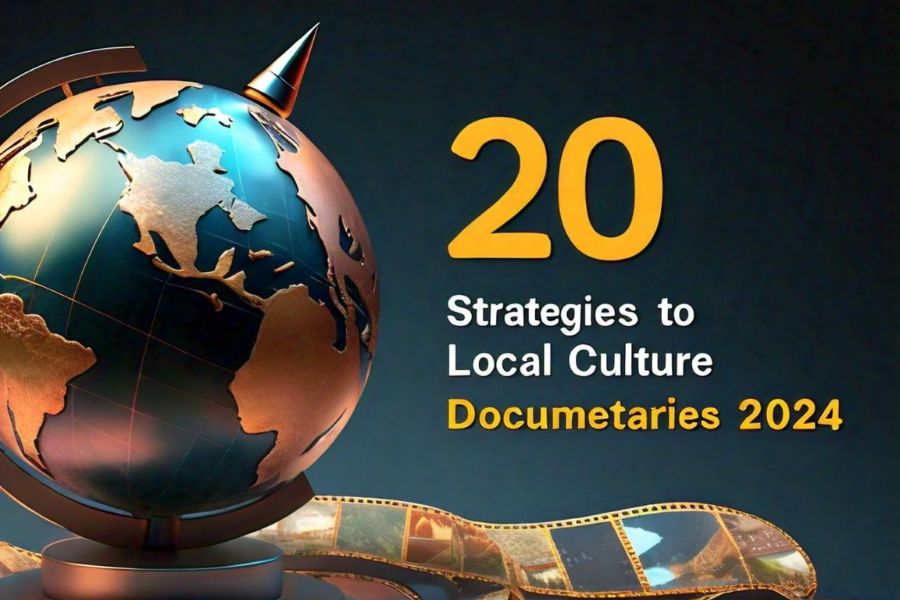Table of Contents
Being deeply involved in filmmaking, I understand that local culture play a pivotal role in shaping our global identity. They unveil unique traditions, beliefs, and lifestyles, preserving them for the future while fostering profound understanding and appreciation for our diverse world. For filmmakers passionate about storytelling and community exploration like myself, delving into local culture through documentaries offers an exceptional avenue. But how does one start? Here, I share 20 effective strategies to guide fellow filmmakers on this enriching journey:
1. Find Your Focus:
Every culture has a wealth of stories. Start by identifying what specifically captures your interest. Is it a traditional craft, a local festival, a social movement, or a hidden culinary gem? Narrowing your focus allows for a deeper exploration.
Example: Perhaps you’re fascinated by the intricate embroidery traditions of a specific region. Your documentary could explore the history of the craft, the techniques used, and the stories passed down through generations of embroiderers.
2. Immerse Yourself:
Research is crucial, but true understanding comes from experience. Attend local events, participate in workshops, and engage with community members. This firsthand knowledge will add authenticity to your film.
Example: To understand the embroidery tradition, you could attend demonstrations, learn basic stitches from a local craftsperson, and interview people who wear or collect these embroidered pieces.
3. Build Relationships in Local Culture:

Your documentary will be enriched by the voices of the people who embody the culture. Build trust with community members, explain your project, and get their consent to be filmed.
Example: Connect with embroidery groups, local artisans, and cultural centers. Let them know your goals and how their participation will contribute to preserving this tradition.
4. Embrace Diversity:
Culture is not monolithic. Seek out different perspectives within the community. Highlight the stories of women, youth, elders, and newcomers to paint a well-rounded picture.
Example: Interview both established masters and young apprentices in the embroidery community. Talk to people who wear the embroidered pieces for daily use and those who wear them for special occasions.
5. Go Beyond the Clichs:
Avoid stereotypical portrayals. Look for the unexpected, the stories that challenge assumptions and showcase the complexities within a culture.
Example: Instead of just focusing on the intricate designs of the embroidery, explore the social and economic factors that influence the craft. Are these embroideries a source of income or a form of artistic expression?
6. Leverage Technology:
There are fantastic tools available to filmmakers on a budget. Utilize high-quality smartphone cameras, explore free editing software options like DaVinci Resolve, and consider online platforms like Kickstarter for crowdfunding.
7. Weave in Sensory Details as Local Culture:
Sight is important, but sound and touch are equally evocative. Capture the rhythmic click of embroidery needles, the bustling atmosphere of a local market, or the vibrant colors of a traditional dress.
Example: Use close-up shots of the embroidery process, record the conversations between artisans and customers at a market, and showcase the textures of the finished pieces.
8. Consider Creative Storytelling:
Documentaries don’t have to be dry recitations of facts. Experiment with animation, archival footage, or reenactments to keep your audience engaged.
Example: You could use animation to illustrate the history of embroidery techniques, incorporate archival photos of people wearing these embroidered pieces in the past, or stage a reenactment of a traditional ceremony where these pieces are worn.
9. Think About Impact:
How can your documentary benefit the community? Consider screening it at local events, partnering with cultural organizations for distribution, or using it to advocate for the preservation of the traditions you document.
Example: Host a film screening at a local library or community center, donate copies to schools and museums, or use clips from your documentary to raise awareness about initiatives supporting embroidery artisans.
10. Embrace the Journey:
Documentary filmmaking can be challenging. Be patient, persistent, and flexible. Embrace unexpected turns in your story and learn from them.
Example: In a music documentary, weather issues led to interviews with local musicians; a canceled interview in a crafts film prompted exploring other aspects. In a wildlife documentary, unexpected animal behavior provided captivating footage, highlighting the value of flexibility in filmmaking.
11. Collaborate with Experts Part of Local Culture:

Seek collaboration with historians, anthropologists, or local culture scholars who can provide deeper insights into the cultural nuances you’re exploring. Their expertise can add depth and accuracy to your documentary.
Example: Invite a historian specializing in textile traditions to discuss the historical significance of embroidery techniques and how they’ve evolved over time in your documentary.
12. Capture Everyday Moments:
Don’t overlook the beauty in everyday life. Document mundane activities that are integral to the culture, such as communal meals, daily rituals, or traditional games played by locals.
Example: Film a family preparing a traditional dish together, showcasing not just the recipe but also the conversations, laughter, and shared memories tied to the meal.
13. Respect and Ethical Representation:
Ensure that your documentary respects cultural sensitivities and represents communities ethically. Seek feedback from community members throughout the filmmaking process to ensure accuracy and avoid misinterpretations.
Example: Before finalizing your documentary, organize a private screening for key community members to gather feedback and address any concerns they may have regarding representation.
14. Explore Intergenerational Connections:
Highlight the bonds between generations and how cultural practices are passed down. Show how elders mentor younger generations, preserving traditions while embracing contemporary influences.
Example: Interview an elder artisan who teaches embroidery techniques to young apprentices, showcasing the interplay between tradition and innovation in the craft.
15. Leverage Social Media and Digital Platforms:
Use social media platforms and digital channels to share behind-the-scenes glimpses, teasers, and updates about your documentary. Build anticipation and engage with a wider audience.
Example: Create short video snippets showcasing interesting aspects of your documentary-making process, such as interviews with local culture experts or footage from cultural events related to your topic.
16. Document Challenges and Resilience:
Highlight challenges faced by the community, such as economic pressures, environmental changes, or social issues. Showcase how the culture adapts and perseveres in the face of adversity.
Example: Explore how changing market trends or globalization impact traditional artisans and their livelihoods, emphasizing resilience and innovation within the community.
17. Foster Cross-Cultural Dialogue:
Use your documentary as a bridge to foster dialogue and exchange between different cultures. Highlight commonalities and celebrate diversity to promote mutual understanding and respect.
Example: Include interviews or collaborations with individuals from diverse backgrounds who share a common interest or appreciation for the cultural elements you’re documenting.
18. Ensure Accessibility as Local Culture:

Consider subtitles or translations for non-native speakers of the language featured in your documentary. Make your film accessible to a global audience to promote cross-cultural learning and appreciation.
Example: Provide subtitles in multiple languages for key interviews or narration segments, ensuring that viewers worldwide can engage with the content effectively.
19. Follow Ethical Filmmaking Practices:
Adhere to ethical guidelines regarding filming permissions, consent forms, and rights management. Respect intellectual property rights and give credit where due for any borrowed content.
Example: Obtain written consent from individuals appearing in your documentary, clearly explaining how their contributions will be used and ensuring they are comfortable with the final portrayal.
20. Engage in Post-Production Reflection:
After completing your documentary, reflect on the impact you hope to achieve and plan distribution strategies accordingly. Measure success not just by viewership but by the positive influence on cultural awareness and appreciation.
Example: Organize post-screening discussions or Q&A sessions to gather feedback and insights from viewers, allowing for continued dialogue and learning beyond the film itself.
Conclusion
In summary, these strategies offer a clear path for filmmakers to respectfully and authentically document local culture. By focusing on specific aspects, building relationships, and embracing diversity, documentaries can bridge cultural gaps and promote appreciation worldwide. Leveraging technology, ethical considerations, and post-production reflections further enhance the impact and reach of these films, fostering a deeper understanding of our global community.
FAQs for Documentary Filmmakers Exploring Local Culture
1. How do I choose a focus for my documentary on local cultures?
Start by identifying aspects of the local culture that interest you the most, such as traditional crafts, festivals, social movements, or culinary traditions. Narrowing down your focus allows for a more in-depth exploration and storytelling.
2. How can I gain authentic understanding of a culture for my documentary?
Immerse yourself in the culture by attending local culture events, participating in workshops, and engaging with community members. Firsthand experiences add depth and authenticity to your film.
3. How important are relationships with community members in documentary filmmaking?
Building relationships with community members is crucial for gaining trust and authenticity in your documentary. Explain your project, seek consent for filming, and involve them in the storytelling process.
4. How can I ensure diversity and inclusivity in my documentary?
Seek out and highlight diverse perspectives within the community, including voices of women, youth, elders, and newcomers. This creates a more comprehensive and respectful portrayal of the culture.
5. How do I avoid clichés and stereotypes in my documentary?
Focus on stories that challenge assumptions and showcase the complexities within the culture. Look for unexpected narratives that go beyond superficial or stereotypical portrayals.

